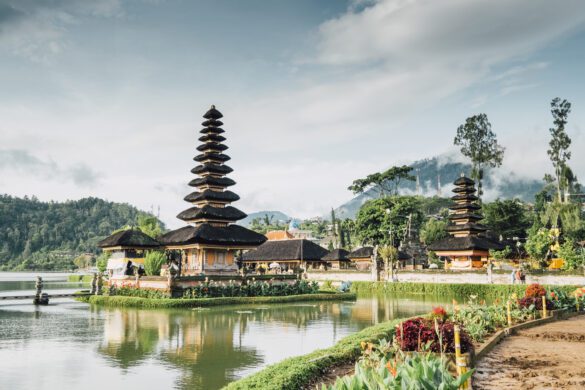Indonesia, a diverse and vibrant country made up of thousands of islands, is known not only for its beautiful natural scenery but also for its rich cultural past. Indonesia is a rich mine of artistic and architectural delights, from ancient temples to contemporary art galleries. In this post, we will explore the intriguing world of Indonesian art and architecture, including its historical foundations, prominent buildings, and dynamic modern scene.
Historical Influences:
A variety of historical influences have affected Indonesian art and architecture. The ancient Java and Sumatra kingdoms, like as Majapahit and Srivijaya, left exquisite temples and sculptures as testaments to their artistic prowess. Borobudur, the world’s biggest Buddhist temple, and Prambanan, a Hindu temple complex, are two of the most well-known examples.
Traditional Architecture:
Indonesian traditional architecture shows the distinct architectural styles of the archipelago’s diverse areas. The exquisite timber architecture and detailed carvings of Java’s Joglo houses reflect Javanese aesthetics. Meanwhile, Papua’s stilt dwellings have a completely distinct aesthetic, emphasizing adaptability to the region’s tropical climate and traditional way of life.
Colonial Legacy:
The Dutch colonial period left a lasting mark on Indonesian architecture. During the Dutch East Indies era, European architectural styles were imported, resulting in a mix of European and Indonesian components. With its great squares, antique buildings, and canals, Jakarta’s Kota Tua, or Old Town, is a prime example of colonial architecture.
Modern and Contemporary Art:
Modern and Contemporary Art (200 words): In recent decades, Indonesia’s art sector has witnessed a resurgence. In the early twentieth century, modern Indonesian art evolved, combining old techniques with contemporary concepts. Raden Saleh, a well-known painter, and Affandi are among the forefathers of Indonesian modern art. Today, the country has a booming contemporary art scene, with a plethora of galleries and art spaces showing the works of both young and established artists.
Architectural Wonders:
Awe-inspiring architectural marvels capture people from all over the world in Indonesia. The Istiqlal Mosque in Jakarta, Southeast Asia’s largest mosque, is a tribute to Indonesian Islamic architecture. The beautiful Sam Poo Kong temple in Semarang and the one-of-a-kind Pontianak floating mosque are additional remarkable examples.
Street Art and Murals:
Street art and murals have grown in popularity in Indonesian cities in recent years, providing brilliant colors and thought-provoking themes to public places. Cities such as Yogyakarta and Bandung have become popular destinations for street art fans, with several lanes and walls adorned with intriguing artworks by local and international artists.
Conclusion:
Art and architecture in Indonesia provide a thrilling trip through centuries of cultural heritage and ingenuity. The country offers a diverse tapestry of creative manifestations, ranging from ancient temples and traditional residences to modern galleries and architectural treasures. Whether you are a history buff, an art lover, or simply a lover of beauty, Indonesia’s art and architecture will leave an indelible impression on you. So, explore this lovely country and immerse yourself in the glories of Indonesian art and architecture.

